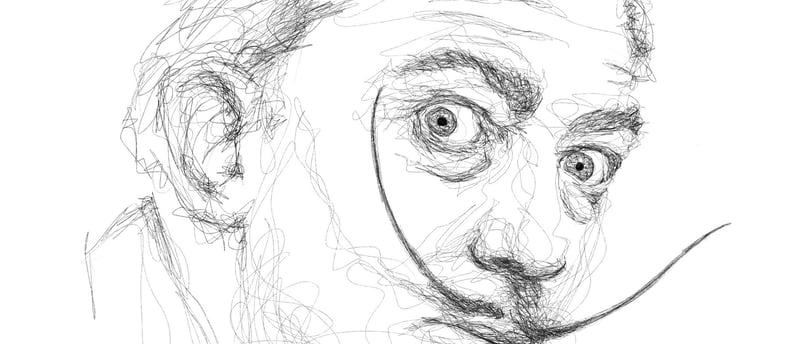The Art of Scribble Portraits: Techniques, History, and Mastery
Scribble art portraits are a unique and captivating form of artistic expression. By using seemingly chaotic and random lines, artists create intricate and detailed images that come to life through the interplay of light and shadow. This technique not only challenges conventional methods of drawing but also provides a fresh perspective on the representation of subjects..
8/6/20242 min read


The History of Scribble Art Origins and Evolution
Scribble art, as a recognized art form, emerged in the late 20th century. It traces its roots back to the broader movements of abstract and contemporary art, where artists began to experiment with non-traditional techniques and materials. The simplicity and spontaneity of scribbling, often considered a child’s activity, were reimagined by artists who saw the potential for complexity and depth.
Influential Artists
Prominent figures in the development of scribble art include:
Jean Dubuffet: Known for his "art brut" or "raw art," Dubuffet’s works often incorporated scribble-like textures and patterns.
Cy Twombly: Twombly’s large-scale scribbles and calligraphic marks bridged the gap between drawing and painting, influencing many contemporary scribble artists.
Sol LeWitt: His wall drawings and sculptures utilized systematic scribbling, emphasizing the process over the final product.
Techniques in Scribble Art Portraits Materials and Tools
Creating a scribble art portrait requires minimal but specific tools:
Pens and Pencils: Fine-tipped pens and pencils are ideal for detailed work.
Paper: High-quality, smooth paper ensures clean lines and durability.
Digital Tools: Tablets and styluses offer a modern twist, allowing for easy corrections and adjustments.
Steps to Create a Scribble Art Portrait
Outline the Subject: Begin with a light sketch to outline the basic shape and proportions of the portrait.
Layering Scribbles: Start layering scribbles, focusing on the darkest areas first. This helps to build depth and contrast.
Refining Details: Gradually refine the scribbles to add more details, adjusting pressure and stroke length to vary the texture.
Highlighting: Use an eraser or white pen to create highlights, enhancing the three-dimensional effect.
Common Challenges and Solutions
Overlapping Lines: Overlapping lines can create unintended dark spots. To avoid this, maintain a consistent stroke direction.
Proportion Issues: Regularly step back to assess the overall proportions and make adjustments as needed.
Maintaining Fluidity: Scribbles should flow naturally. Practice loose, fluid motions to keep the lines organic.
Benefits of Scribble Art Therapeutic Effects
Scribble art can be a therapeutic activity, promoting relaxation and mindfulness. The repetitive motion of scribbling can be meditative, reducing stress and anxiety.
Enhancing Creativity
This art form encourages creative thinking and experimentation. The lack of rigid structure allows artists to explore new ideas and techniques freely.
Future of Scribble Art Digital Transformation
With the advent of digital tools, scribble art is evolving. Artists are now using software like Procreate and Adobe Fresco to create detailed scribble portraits, offering new possibilities for innovation and creativity.
Expanding Applications
Scribble art is finding its way into various fields, including graphic design, animation, and fashion. Its versatility and unique aesthetic make it a valuable addition to any creative project.
